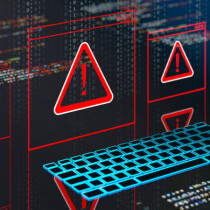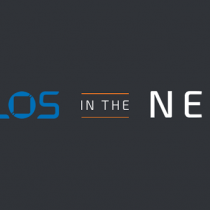Cisco releases update to fix IOS to stop authorization vulnerability
Cisco has fixed up IOS to stop up an authorization vulnerability. Using the HTTP server, under local authorization, a nasty user could bypass the authentication and execute any command. The user will be able to exercise complete control over the device. All commands will be executed with the highest privilege (level 15).
All releases of Cisco IOS software, starting with the release 11.3 and later, are vulnerable. Virtually all mainstream Cisco routers and switches running Cisco IOS are affected. Products that are not running Cisco IOS software are not vulnerable. A copy of the CISCO update and links is attached....
Cisco Security Advisory: IOS HTTP Authorization Vulnerability
Revision 1.0
For Public Release 2001 June 27 08:00 (UTC -0800)
Summary
When HTTP server is enabled and local authorization is used, it is possible, under some
circumstances, to bypass the authentication and execute any command on the device. In that
case, the user will be able to exercise complete control over the device. All commands
will be executed with the highest privilege (level 15).
All releases of Cisco IOS® software, starting with release 11.3 and later, are
vulnerable. Virtually all mainstream Cisco routers and switches running Cisco IOS software
are affected by this vulnerability.
Products that are not running Cisco IOS software are not vulnerable.
The workaround for this vulnerability is to disable HTTP server on the router or to use
Terminal Access Controller Access Control System (TACACS+) or Radius for authentication.
This advisory will be posted at http://www.cisco.com/warp/public/707/IOS-httplevel-pub.html.
Affected Products
Any device running Cisco IOS software release 11.3 and later is vulnerable.
Cisco devices that may be running with affected Cisco IOS software releases include,
but are not limited to:
- Cisco routers in the AGS/MGS/CGS/AGS+, IGS, RSM, 800, ubr900, 1000, 1400, 1500, 1600,
1700, 2500, 2600, 3000, 3600, 3800, 4000, 4500, 4700, AS5200, AS5300, AS5800, 6400, 7000,
7100, 7200, ubr7200, 7500, and 12000 series. - Most recent versions of the LS1010 ATM switch.
- The Catalyst 6000 if it is running Cisco IOS software.
- The Catalyst 2900XL LAN switch only if it is running Cisco IOS software.
- The Catalyst 1900, 2800, 2900, 3000, and 5000 series LAN switches are affected.
- The Cisco Distributed Director.
For some products, the affected software releases are relatively new and may not be
available on every device listed above.
If you are not running Cisco IOS software, you are not affected by this vulnerability.
Cisco products that do not run Cisco IOS software and are not affected by this defect
include, but are not limited to:
- 700 series dial-up routers (750, 760, and 770 series).
- The Catalyst 6000 is not affected if it is not running Cisco IOS software.
- WAN switching products in the IGX and BPX lines.
- The MGX (formerly known as the AXIS shelf).
- Host-based software.
- The Cisco PIX Firewall.
- The Cisco Local Director.
- The Cisco Cache Engine.
No other Cisco products are affected.
Details
By sending a crafted URL it is possible to bypass authentication and execute any
command on the router at level 15 (enable level, the most privileged level). This will
happen only if the user is using a local database for authentication (usernames and
passwords are defined on the device itself). The same URL will not be effective against
every Cisco IOS software release and hardware combination. However, there are only 84
different combinations to try, so it would be easy for an attacker to test them all in a
short period of time.
The URL in question follows this format:
http:///level/xx/exec/....
Where xx is a number between 16 and 99.
This vulnerability is documented as Cisco Bug ID CSCdt93862.
Impact
An attacker can exercise complete control over the device. By exploiting this
vulnerability, the attacker can see and change the configuration of the device.
Each row of the table describes a release train and the platforms or products for which
it is intended. If a given release train is vulnerable, then the earliest possible
releases that contain the fix and the anticipated date of availability for each are listed
in the "Rebuild", "Interim", and "Maintenance" columns. A
device running any release in the given train that is earlier than the release in a
specific column (less than the earliest fixed release) is known to be vulnerable, and it
should be upgraded at least to the indicated release or a later version (greater than the
earliest fixed release label).
When selecting a release, keep in mind the following definitions:
- Maintenance
- Most heavily tested and highly recommended release of any label in a given row of the
table. - Rebuild
- Constructed from the previous maintenance or major release in the same train, it
contains the fix for a specific defect. Although it receives less testing, it contains
only the minimal changes necessary to effect the repair. - Interim
- Built at regular intervals between maintenance releases and receives less testing.
Interims should be selected only if there is no other suitable release that addresses the
vulnerability, and interim images should be upgraded to the next available maintenance
release as soon as possible. Interim releases are not available via manufacturing, and
usually they are not available for customer download from CCO without prior arrangement
with the Cisco TAC.
In all cases, customers should exercise caution to be certain the devices to be
upgraded contain sufficient memory and that current hardware and software configurations
will continue to be supported properly by the new release. If the information is not
clear, contact the Cisco TAC for assistance as shown in the following section.
More information on Cisco IOS software release names and abbreviations is available at http://www.cisco.com/warp/public/620/1.html.
Train
Description of Image or Platform
Availability of Fixed Releases*
11.0-based Releases and Earlier
Rebuild
Interim**
Maintenance
10.3
Multiple releases and platforms
Not affected
11.0
Multiple releases and platforms
Not affected
11.1-based Releases
Rebuild
Interim**
Maintenance
11.1
Major release for all platforms
Not affected
11.2-based Releases
Rebuild
Interim**
Maintenance
11.2
Major release for all platforms
End of Engineering
Not affected
11.3-based Releases
Rebuild
Interim**
Maintenance
11.3
Major release for all platforms
End of Engineering
Upgrade recommended to 12.0(18)
11.3AA
ED for dial platforms and access servers: 5800, 5200, 5300, 7200
Not Scheduled
Upgrade recommended to 12.1(9)
11.3DA
Early deployment train for ISP DSLAM 6200 platform
End of Engineering
Upgrade recommended to 12.1DA
11.3DB
Early deployment train for ISP/Telco/PTT xDSL broadband concentrator
platform, (NRP) for 6400
End of Engineering
Upgrade recommended to 12.1DB
11.3HA
Short-lived ED release for ISR 3300 (SONET/SDH router)
End of Engineering
Upgrade recommended to 12.0(18)
11.3MA
MC3810 functionality only
End of Engineering
Upgrade recommended to 12.1(9)
11.3NA
Voice over IP, media convergence, various platforms
End of Engineering
Upgrade recommended to 12.1(9)
11.3T
Early deployment major release, feature-rich for early adopters
End of Engineering
Upgrade recommended to 12.0(18)
11.3XA
Introduction of ubr7246 and 2600
End of Engineering
Upgrade recommended to 12.0(18)
11.3WA4
LightStream 1010
End of Engineering
Upgrade to be determined
12.0-based Releases
Rebuild
Interim**
Maintenance
12.0
General Deployment release for all platforms
12.0(18)
12.0DA
xDSL support: 6100, 6200
Not Scheduled
Upgrade recommended to 12.1(7)DA2
12.0DB
Early Deployment (ED) release, which delivers support for the Cisco 6400
Universal Access Concentrator (UAC) for Node Switch Processor (NSP).
Not Scheduled
Upgrade recommended to 12.1(5)DB2
12.0DC
Early Deployment (ED) release, which delivers support for the Cisco 6400
Universal Access Concentrator (UAC) for Node Switch Processor (NSP).
Not Scheduled
Upgrade recommended to 12.1DC
12.0S
Core/ISP support: GSR, RSP, c7200
12.0(18)S
Available 2001-July
12.0SC
Cable/broadband ISP: ubr7200
12.0(16)SC
12.0SL
10000 ESR: c10k
12.0ST
Cisco IOS software Release 12.OST is an early deployment (ED) release for the Cisco
7200, 7500/7000RSP and 12000 (GSR) series routers for Service Providers (ISPs).
12.0T
Early Deployment(ED): VPN, Distributed Director, various platforms
Not Scheduled
Upgrade recommended to 12.1(9)
12.0(13)W5(19c)
Catalyst switches: cat8510c, cat8540c, c6msm, ls1010, cat8510m, cat8540m
Not vulnerable
12.0(10)W5(18g)
Catalyst switches: cat2948g, cat4232
12.0(18)W5(22a)
2001-August-23
12.0(14)W5(20)
Catalyst switches: cat5000ATM
12.0(18)W5(22)
2001-August-03
12.0WC
Not Scheduled
Upgrade to be determined
12.0WT
cat4840g
Not Scheduled
Upgrade to be determined
12.0XA
Early Deployment (ED): limited platforms
Not Scheduled
Upgrade recommended to 12.1(9)
12.0XB
Short-lived early deployment release
Not Scheduled
Upgrade recommended to 12.1(9)
12.0XC
Early Deployment (ED): limited platforms
Not Scheduled
Upgrade recommended to 12.1(9)
12.0XD
Early Deployment (ED): limited platforms
Not Scheduled
Upgrade recommended to 12.1(9)
12.0XE
Early Deployment (ED): limited platforms
Not Scheduled
Upgrade recommended to 12.1(8a)E
12.0XF
Early Deployment (ED): limited platforms
Not Scheduled
Upgrade recommended to 12.1(9)
12.0XG
Early Deployment (ED): limited platforms
Not Scheduled
Upgrade recommended to 12.1(9)
12.0XH
Early Deployment (ED): limited platforms
Not Scheduled
Upgrade recommended to 12.1(9)
12.0XI
Early Deployment (ED): limited platforms
Not Scheduled
Upgrade recommended to 12.1(9)
12.0XJ
Early Deployment (ED): limited platforms
Not Scheduled
Upgrade recommended to 12.1(9)
12.0(5)XK
Early Deployment (ED): limited platforms
Not Scheduled
Upgrade recommended to 12.1(9)
12.0(7)XK
Early Deployment (ED): limited platforms
Not Scheduled
Upgrade recommended to 12.2
12.0XL
Early Deployment (ED): limited platforms
Not Scheduled
Upgrade recommended to 12.1(9)
12.0XM
Early Deployment (ED): limited platforms
Not Scheduled
Upgrade recommended to 12.0(4)XM1
Availability date to be determined
12.0XN
Early Deployment (ED): limited platforms
Not Scheduled
Upgrade recommended to 12.1(9)
12.0XP
Early Deployment (ED): limited platforms
Not Scheduled
Upgrade to be determined
12.0XQ
Early Deployment (ED): limited platforms
Not Scheduled
Upgrade recommended to 12.1(9)
12.0XR
Early Deployment (ED): limited platforms
Not Scheduled
Upgrade recommended to 12.2(1b)
12.0XS
Early Deployment (ED): limited platforms
End of Engineering
Upgrade recommended to 12.1(8a)E
12.0XU
Early Deployment (ED): limited platforms
Not Scheduled
Upgrade to be determined
12.0XV
Early Deployment (ED): limited platforms
Not Scheduled
Upgrade to be determined
12.1-based Releases
Rebuild
Interim**
Maintenance
12.1
General deployment release for all platforms
12.1(9)
12.1AA
Dial support
12.1CX
Core/ISP support: GSR, RSP, c7200
12.1DA
xDSL support: 6100, 6200
12.1(7)DA2
2001-Jun-18
12.1DB
Cisco IOS Software Release 12.1(1)DB supports Cisco?s 6400 Universal Access
Concentrator
12.1DC
Cisco IOS Software Release 12.1(1)DC supports Cisco?s 6400 Universal Access
Concentrator
12.1E
Core/ISP support: GSR, RSP, c7200
12.1(8a)E
2001-Jul-09
12.1EC
12.1EC is being offered to allow early support of new features on the uBR7200
platform, as well as future support for new Universal Broadband Router headend platforms.
12.1(6.5)EC3
12.1EX
Catalyst 6000 support
12.1(8a)E
2001-Jul-09
12.1EY
Cat8510c, Cat8510m, Cat8540c, Cat8540m, LS1010
12.1(6)EY
12.1EZ
Early Deployment (ED): special image
12.1(6)EZ1
12.1T
Early Deployment(ED): VPN, Distributed Director, various platforms
Not Scheduled
Upgrade recommended to 12.2(1b)
12.1XA
Early Deployment (ED): limited platforms
12.1XB
Early Deployment (ED): limited platforms
12.1XC
Early Deployment (ED): limited platforms
12.1XD
Early Deployment (ED): limited platforms
Not Scheduled
Upgrade recommended to 12.2(1b)
12.1XE
Early Deployment (ED): limited platforms
12.1XF
Early Deployment (ED): 811 and 813 (c800 images)
12.1(2)XF4
2001-July-09
12.1XG
Early Deployment (ED): 800, 805, 820, and 1600
12.1(5)XG5
2001-July-09
12.1XH
Early Deployment (ED): limited platforms
Not Scheduled
Upgrade recommended to 12.2(1b)
12.1XI
Early Deployment (ED): limited platforms
Not Scheduled
Upgrade recommended to 12.2(1b)
12.1XJ
Early Deployment (ED): limited platforms
Not Scheduled
Upgrade recommended to 12.1(5)YB4
12.1XK
Early Deployment (ED): limited platforms
12.1XL
Early Deployment (ED): limited platforms
Not Scheduled
Upgrade recommended to 12.2(1b)
12.1XM
Short-lived early deployment release
12.1(4)XM4
2001-June-27
12.1XP
Early Deployment (ED): 1700 and SOHO
12.1(3)XP4
12.1XQ
Short-lived early deployment release
Not Scheduled
Upgrade recommended to 12.2(1b)
12.1XR
Short-lived early deployment release
12.1(5)XR2
12.1XS
Short-lived early deployment release
12.1XT
Early Deployment (ED): 1700 series
12.1(3)XT3
12.1XU
Early Deployment (ED): limited platforms
12.1(5)XU1
12.1XV
Short-lived early deployment release
12.1(5)XV3
2001-July
12.1XW
Short-lived early deployment release
Not Scheduled
Upgrade recommended to 12.2DD
12.1XX
Short-lived early deployment release
12.1(6)EZ
12.1XY
Short-lived early deployment release
12.1(5)XY6
2001-July
12.1XZ
Short-lived early deployment release
12.1(5)XZ4
2001-July
12.1YA
Short-lived early deployment release
12.1YB
Short-lived early deployment release
12.1(5)YB4
12.1YC
Short-lived early deployment release
12.1(5)YC1
12.1YD
Short-lived early deployment release
12.1(5)YD2
2001-June-25
12.1YF
Short-lived early deployment release
12.1(5)YF2
12.2-based Releases
Rebuild
Interim**
Maintenance
12.2
General deployment release for all platforms
12.2(1b)
12.2(1.1)
12.2(3)
2001-August
12.2T
General deployment release for all platforms
12.2(2.2)T
12.2XA
SPLOB
12.2(2)XA
2001-July-02
12.2XD
Short-lived early deployment release
12.2(1)XD1
12.2XE
Short-lived early deployment release
12.2(1)XE
12.2XH
Short-lived early deployment release
12.2(1)XH
2001-June-25
12.2XQ
Short-lived early deployment release
12.2(1)XQ
2001-June-23
Notes
* All dates are estimates and subject to change.
** Interim releases
are subjected to less rigorous testing than regular maintenance releases, and may have
serious bugs.
Obtaining Fixed Software
Cisco is offering free software upgrades to eliminate this vulnerability for all
affected customers.
Customers with contracts should obtain upgraded software through their regular update
channels. For most customers, this means that upgrades should be obtained through the
Software Center on Cisco's Worldwide Web site at http://www.cisco.com.
Please do not contact either "psirt@cisco.com" or
"security-alert@cisco.com" for software upgrades.
Workarounds
The workaround for this vulnerability is to disable HTTP server on the router or to use
TACACS+ or Radius for authentication.
To disable HTTP server, use the following commands:
Router# configure terminal
Enter configuration commands, one per line. End with CNTL/Z.
Router(config)# no ip http server
In order to configure TACACS+ or Radius for authentication, please consult the
following link http://www.cisco.com/warp/public/480/tacplus.shtml
Exploitation and Public Announcements
This vulnerability has been reported to us independently by David Hyams, Ernst &
Young, Switzerland and by Bashis (bash@ns.wcd.se).
The Cisco PSIRT has received no reports of malicious exploitation of this vulnerability
and we are not aware of any public discussion.
This is a final security advisory. Cisco anticipates issuing updated versions of this
notice at irregular intervals as there are material changes in the facts, and will
continue to update this notice as necessary. The reader is warned that this notice may
contain inaccurate or incomplete information. Although Cisco cannot guarantee the accuracy
of all statements in this notice, all of the facts have been checked to the best of our
ability. Cisco anticipates issuing monthly updates of this notice until it reaches FINAL
status.
A standalone copy or paraphrase of the text of this security advisory that omits the
distribution URL in the following section is an uncontrolled copy, and may lack important
information or contain factual errors.
This notice will be posted on Cisco's Worldwide Web site at http://www.cisco.com/warp/public/707/IOS-httplevel-pub.html.
In addition to Worldwide Web posting, a text version of this notice is clear-signed with
the Cisco PSIRT PGP key and is posted to the following e-mail and Usenet news recipients:
- cust-security-announce@cisco.com
- bugtraq@securityfocus.com
- first-teams@first.org (includes CERT/CC)
- cisco@spot.colorado.edu
- comp.dcom.sys.cisco
- firewalls@lists.gnac.com
- Various internal Cisco mailing lists
Future updates of this notice, if any, will be placed on Cisco's Worldwide Web server,
but may or may not be actively announced on mailing lists or newsgroups. Users concerned
about this problem are encouraged to check the URL given above for any updates.
Revision 1.0
2001-June-27 08:00 UTC -0800
Initial public release
Complete information on reporting security vulnerabilities in Cisco products, obtaining
assistance with security incidents, and registering to receive security information from
Cisco, is available on Cisco's Worldwide Web site at http://www.cisco.com/warp/public/707/sec_incident_response.shtml.
This includes instructions for press inquiries regarding Cisco security notices.
This notice is Copyright 2001 by Cisco Systems, Inc. This notice may be redistributed
freely after the release date given at the top of the text, provided that redistributed
copies are complete and unmodified, and include all date and version information.









































































